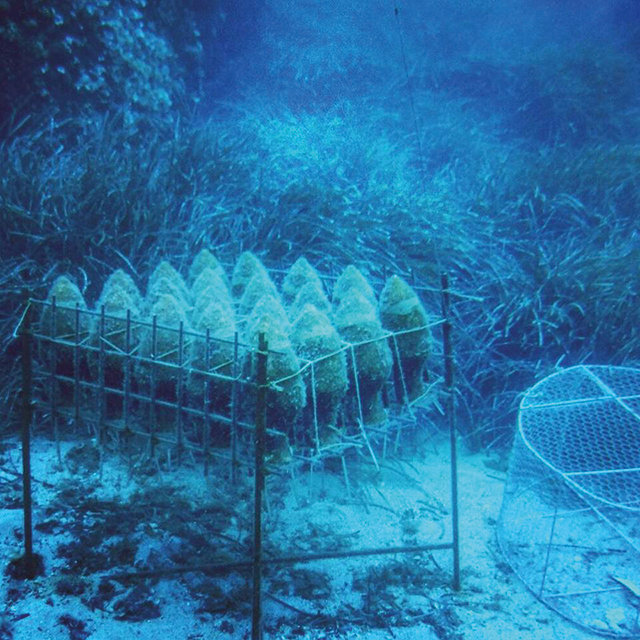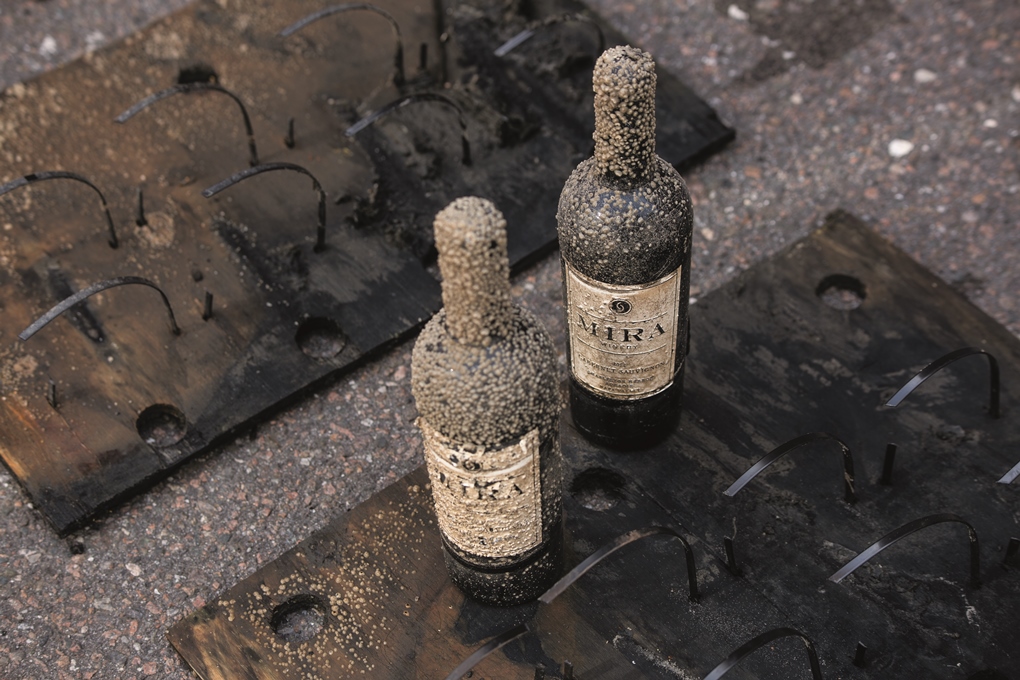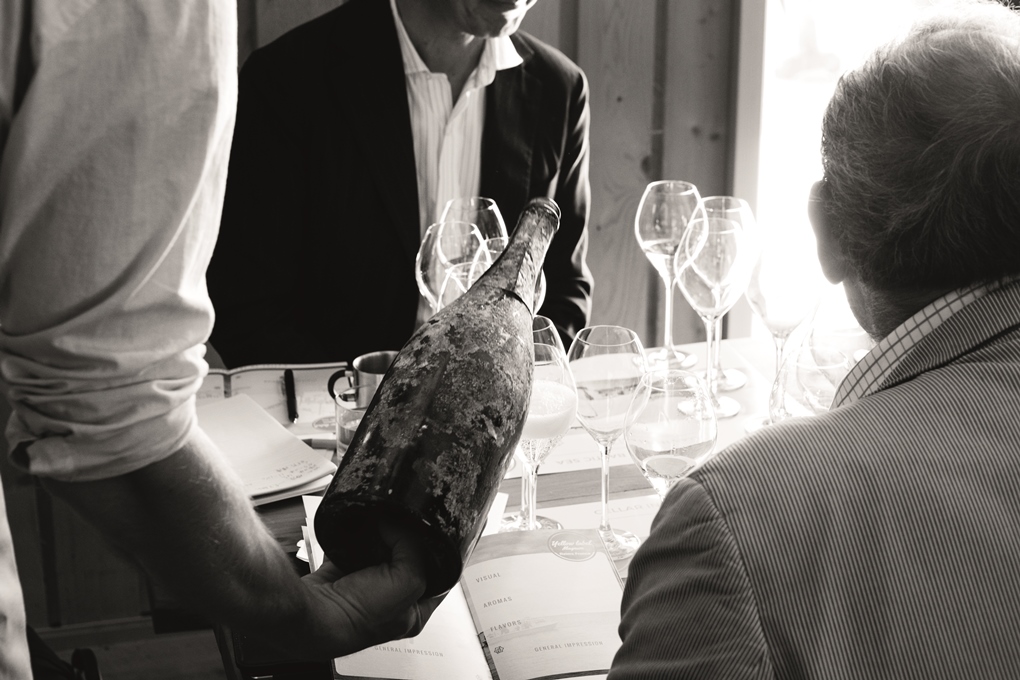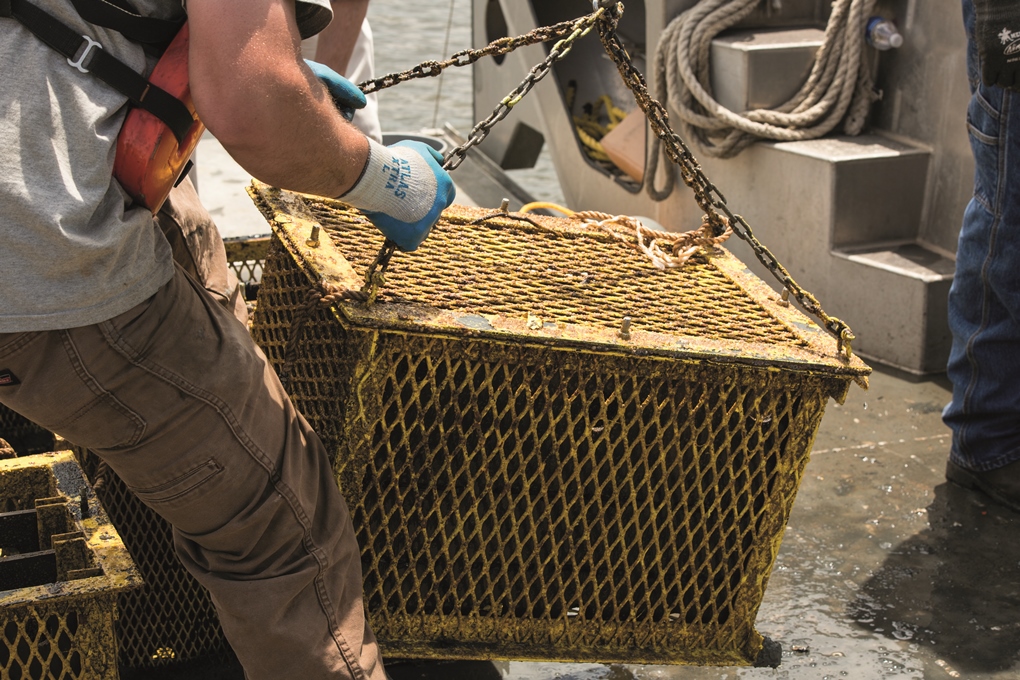On paper, the case for ageing wine underwater is a strong one. Deep beneath the waves the temperature of your cellar never fluctuates, allowing your wine to mature at its own pace. You don’t need to worry about oxygen contamination. No ultra violet light can yellow the wine or damage the flavour. For now, at least, the storage is free and limitless. Tucked up in their underwater bed, your bottles will be gently cradled and rocked by the motion of the ocean.
One gets a better wine, say the producers leading this marine revolution. The colour is brighter. The lees are kept moving in just the right rhythm for smooth maturation. White wines taste crisper and fresher. The salinity raises levels of sodium carbonate just enough to inspire more intense, complex flavours, especially for oak-aged red wines. The water pressure results in better bubbles.
Nonsense, reply the cynics. You’re pulling our chain. It’s marketing gone mad. Any changes in nose or taste are hard to detect, let alone isolate as a definitive product of underwater ageing. The only thing appreciating is the price tag. Whichever side of the fence you sit on, it’s hard to ignore the gathering noise. There are some serious names taking a serious interest. They don’t come much bigger than Veuve Clicquot. In 2010 a cache of 170-year-old champagne was retrieved from a shipwreck in the Baltic Sea. Marked with the maison’s stamp on the cork, the wine was still fizzy and drinkable. True to its reputation as an innovator, the producer has now sent a vault of 350 bottles to the bottom of the Baltic in a controlled 40-year experiment.
Louis Roederer, founded in 1776 and still owned by the family, could be forgiven for taking a laissez-faire approach to champagne production. When you have Cristal in your stable, why over-complicate? But they too have dabbled in undersea-ageing by dropping a stash of brut premier 15 metres off the Normandy coast. Chateau Larrivet Haut-Brion are sinking barrels rather than bottles. The domain plunged Neptune – a 56-litre barrel of Bordeaux – into the waters off Cap Ferret, on the coast of western France, and kept its identical twin on land. Critics were forced to concede that the seabed proved the better cellar, creating a softer and more complex wine.
It’s not just the sea that’s getting French producers excited. Crates of Arbois wine are now chilling 60 metres down in a man-made lake, courtesy of Henri Maire. The Jura pioneer has form in pushing boundaries, having matured his distinctive yellow wine at temperatures of minus 40 degrees in the Arctic Circle, just because he could. Famously, in 1955, he walled a number of bottles in the caverns beneath the Paris restaurant Tour d’Argent, with orders they remain untouched until 2055 – long after his death.
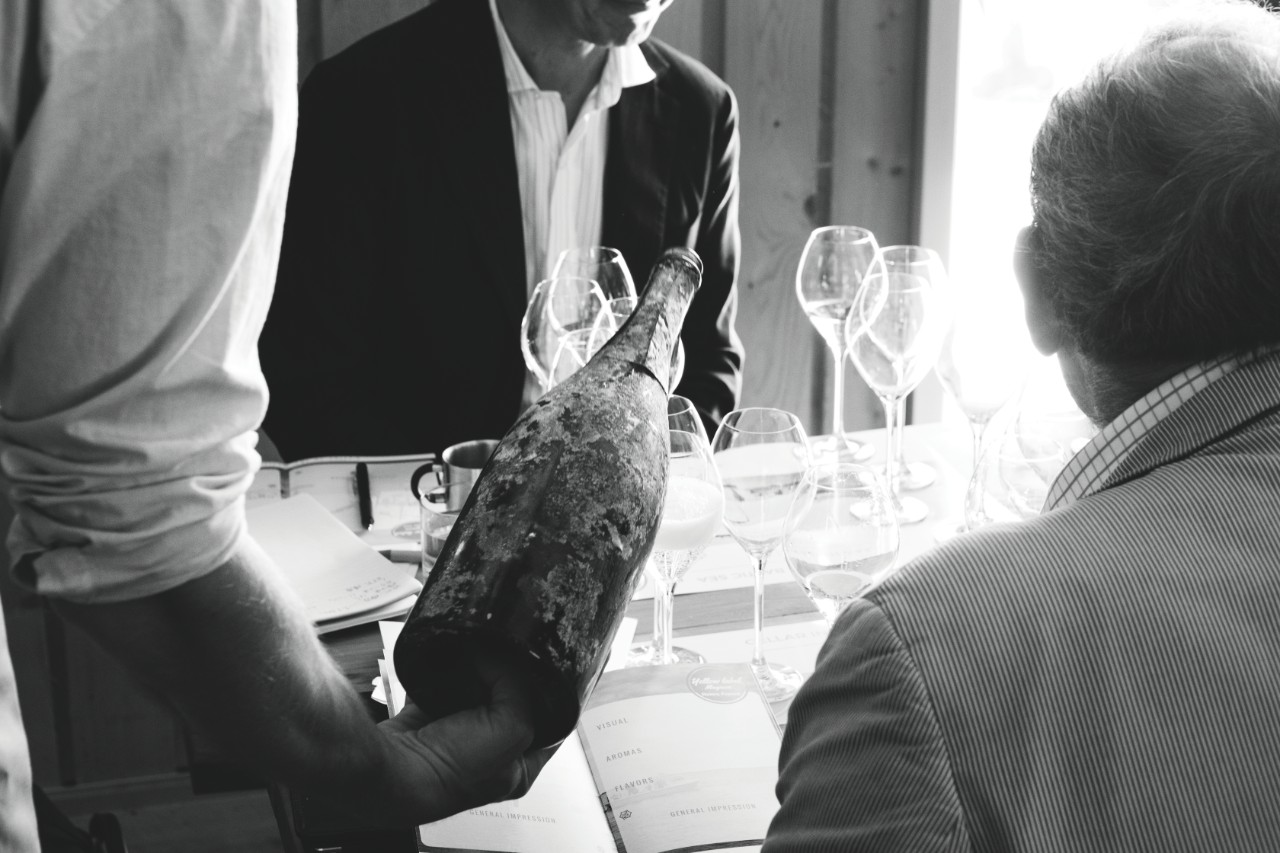
Above: Veuve Clicquot's experiment with champagne stored beneath the waves.
And it’s not just the French. Across the border in Switzerland, a thousand bottles of Clos de Chillon are suspended by a 30-metre cable in Lake Geneva. In Croatia you can dive for your own amphora of sea-matured red wine off the Pelješac peninsula. On the Italian Riviera, Pierluigi Lugano stores his Abissi wine over the quayside. How much the flavour is altered by its underwater sojourn is open to debate, but the net benefits for Pierluigi are considerable, as his wine is now celebrated worldwide.
In Spain, a project called Crusoe Treasure is taking research to new heights (or is that depths?) by comparing wines from 27 bodegas that are simultaneously aged on land and at sea. The respected oenologist Antonio Palacios is providing microbiological analysis of the wine at his Excell laboratory in Rioja. They have even built an offshore reef to house the bottles – and innumerable sea species – in the Bay of Biscay.
Keep going west across the Atlantic and you’ll eventually wash up in Charleston Harbour, another testing ground for underwater wine. The Mira Winery, based in the Napa Valley, was inspired by the discovery of bottles in sunken British trading ships up and down the eastern seaboard. Unfortunately experiments were curtailed by government rulings that maintained the corks risked being degraded by sewage in the water. Is this a sign of the practical challenges ahead if underwater ageing progresses from backwater research to mainstream industry?
In Chile, South Africa and Australia, producers are teasing secrets from an array of damp cellars, including sea caverns and freshwater tanks. Soon, the idea of underwater ageing will be old news. Then the wine will need to do the talking, not the marketers.

